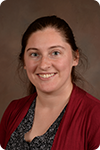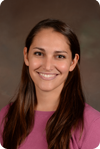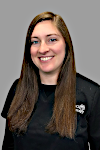ACL Rehabilitation — The Jackson Clinics
Understanding ACL Rehabilitation
Whether you’re an athlete eager to return to sport or someone focused on everyday mobility, understanding the rehab process is key to a successful recovery.
In this guide, we’ll walk you through everything you need to know about ACL rehabilitation.
Let’s Discuss:
- What is ACL Rehabilitation
- What ACL rehab involves
- What the ACL rehab timeline looks like
- Signs your ACL rehab is on track
ACL Rehabilitation: Your Road to Recovery
Tearing your ACL can be overwhelming—one moment you’re moving freely, the next you’re dealing with pain, swelling, and uncertainty. Whether it happened during a game, a workout, or a misstep, the journey forward can feel daunting.
The good news? With the right rehabilitation plan and support, a full recovery is absolutely possible.
First Things First: What Is ACL Rehabilitation?
ACL rehabilitation is the process of helping your knee heal and regain strength, stability, and function after an ACL (anterior cruciate ligament) injury or surgery. The ACL is a key ligament that stabilizes the knee, and when it’s torn, you may feel pain, instability, and limited mobility.
What’s Actually Involved in ACL Rehab?
A solid ACL rehabilitation program isn’t just a bunch of knee exercises.
It’s a full-body reset with five major components:
- Pain & Swelling Management: Ice, elevation, light movement—all to help your knee calm down and create a better healing environment.
- Range of Motion Work: Getting your knee fully straight is the #1 priority early on. Then we work on bending it back to full flexion, too.
- Strength Training: From basic quad sets to heavy single-leg work, we focus on building strong, supportive muscles around the knee—and the whole body.
- Balance & Movement Control: ACL injuries throw off your knee’s ability to “know” where it is in space. We retrain that with balance work, single-leg drills, and coordination training.
- Sport-Specific & Functional Training: This is where rehab meets real life: running, cutting, jumping, pivoting—whatever your sport or goal, we’ll tailor it to you.
Why ACL Rehab Is So Important
We get this question a lot: “Do I really need months of rehab?”
Short answer? Yes.
Here’s why:
It protects your knee from further injury
It helps you build strength, flexibility, and coordination
It restores confidence in your body
It sets you up for a safer return to the activities you love
Skipping steps—or rushing the process—can lead to long-term issues like re-injury, instability, or even arthritis. A proper rehab program gives you the best shot at a full, strong, and lasting recovery.
What Does the ACL Rehab Timeline Look Like?
Every person is different, but most ACL recoveries take 6 to 9 months—closer to 9 to 12 months if you’re returning to cutting or multidirectional sports. Some take longer, and that’s okay too. What matters most is making steady progress—not hitting a deadline.
Here’s a general breakdown of what you can expect:
Phase 1: Calming Things Down
Your goals:
Reduce swelling and pain
Get your knee straight (this is super important)
Start gentle motion and walking, maybe with crutches
You’ll do simple exercises—nothing intense yet—just enough to start waking up the muscles and moving the joint safely.
Phase 2: Getting Stronger & More Mobile
Your goals:
Regain full range of motion
Begin light strength training
Start working on balance
You might do things like mini-squats, bridges, or gentle cycling. It starts to feel like “real” rehab—and you’ll probably feel more hopeful as you see progress.
Phase 3: Building Strength & Stability
Your goals:
Rebuild strength in your legs (especially quads & hamstrings)
Improve control and movement patterns
Start dynamic balance work
This is when you start moving more confidently. You’ll do things like single-leg exercises, step-downs, and maybe even begin jogging soon (if cleared).
Phase 4: Prepping for Real-Life Movement
Your goals:
Build endurance and power
Begin agility and jumping
Work on sport-specific movements
This phase feels more like training than therapy. Think: box jumps, running drills, change-of-direction work. You’ll start to feel like you again.
Phase 5: Return to Sport
Your goals:
Test your readiness
Fine-tune strength, control, and confidence
Get back to your sport—or life—with peace of mind
This is where ongoing Return to Sport Testing becomes especially important. It’s the only true way to objectively confirm whether you’re physically and mentally ready to return.
“Am I Getting Better?” – Signs Your Rehab Is On Track
Here’s what progress often looks like:
Less swelling and discomfort
Improved range of motion
More strength in your injured leg
Less hesitation during movement
Feeling more like yourself
Still unsure? That’s okay. Recovery isn’t always linear, and just because things feel better doesn’t necessarily mean you’re objectively improving as expected.
That’s why Return to Sport Testing plays such a crucial role in your rehab—it uses objective measures at key stages throughout rehab to confirm you’re truly on track to return safely and that your program is achieving the desired results to help you reach your goals.
What Does Return To Sport Testing Involve?
ACL Return To Sport Testing isn’t just a box to check—it’s one of the most important steps in your recovery.
Return to Sport Testing gives us a clear, data-driven picture of your progress, helping ensure you’re truly ready for the demands ahead. Through a series of objective assessments, we’re able to identify whether your recovery has reached the level needed to handle real-world demands.
Key areas we evaluate include:
Leg strength
Movement control
Balance and agility
Confidence in your knee
Passing functional performance tests
By looking at these factors together, we can take the guesswork out of your return and give you the confidence that you’re not just feeling ready—you are ready.
Why It’s Worth Working With a Physical Therapist
Maybe you could do it alone…but why risk it?
Working with an experienced physical therapist means:
You get a plan tailored to your goals
You’ll stay on track with proper progression
You’ll reduce the chance of re-injury
You’ll have a support system throughout the process
Meet Our ACL Rehabilitation Specialists
Ready to Start Your ACL Rehab?
Our ACL Specialists are here to help.
Whether you’re early in your recovery or nearing your return to sport, we’re here to guide you every step of the way.
And when the time comes, don’t forget to check out our ACL Return to Sport Testing program—designed to give you (and your knee) the green light to move forward with confidence.
Ready to take control of your recovery?
Start your journey with expert support and comprehensive ACL rehab today.
FAQ: Quick Answers About ACL Rehab
Q: Can I do ACL rehab without surgery?
Yes, in some cases—especially if you’re not planning to return to high-impact activity. But even if you don’t have surgery, rehab is still 100% necessary.
Q: How long does it take?
Most people need 6–9 months for general recovery, but if you’re returning to multidirectional sports, it can take 9–12 months. It depends on your body, goals, and how consistent you are with rehab.
Q: Will my knee ever feel normal again?
With the right rehab and support? Absolutely. Many people return to full activity with strength, stability, and confidence.












